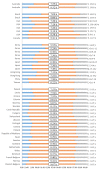Characteristic Sleep Patterns and Associated Obesity in Adolescents
- PMID: 36143353
- PMCID: PMC9500978
- DOI: 10.3390/life12091316
Characteristic Sleep Patterns and Associated Obesity in Adolescents
Abstract
Poor sleep adversely affects health and may cause obesity. Poor sleep includes short sleep duration, low quality of sleep, and sleep discrepancy. Although most studies have focused on the association between sleep duration and obesity, poor sleep is a significant risk factor for obesity. Adolescents have characteristic sleep patterns which correspond to poor sleep. Adolescents sleep late due to various biological and psychosocial factors; also, they wake up early to be on time for school. This causes them to sleep less. To make up for this sleep debt, adolescents sleep more on non-school days, which causes sleep discrepancies. Therefore, since adolescents have characteristic sleep patterns, an in-depth investigation is needed to identify whether poor sleep is a risk for obesity. This article presents an overview of the characteristic sleep patterns of adolescents, and reviews studies on the association of each sleep pattern with obesity.
Keywords: adolescents; body mass index (BMI); obesity; sleep disturbances; sleep duration; sleep patterns; sleep timing.
Conflict of interest statement
The authors declare no conflict of interest.
Figures
Similar articles
-
Sleep duration rather than sleep timing is associated with obesity in adolescents.Sleep Med. 2020 Apr;68:184-189. doi: 10.1016/j.sleep.2019.12.014. Epub 2020 Jan 11. Sleep Med. 2020. PMID: 32044556
-
Sleep duration or bedtime? Exploring the association between sleep timing behaviour, diet and BMI in children and adolescents.Int J Obes (Lond). 2013 Apr;37(4):546-51. doi: 10.1038/ijo.2012.212. Epub 2013 Jan 8. Int J Obes (Lond). 2013. PMID: 23295498
-
Associations among late chronotype, body mass index and dietary behaviors in young adolescents.Int J Obes (Lond). 2015 Jan;39(1):39-44. doi: 10.1038/ijo.2014.157. Epub 2014 Aug 19. Int J Obes (Lond). 2015. PMID: 25135376
-
Sleep patterns and obesity in childhood.Curr Opin Endocrinol Diabetes Obes. 2015 Feb;22(1):41-7. doi: 10.1097/MED.0000000000000125. Curr Opin Endocrinol Diabetes Obes. 2015. PMID: 25517022 Free PMC article. Review.
-
Poor Sleep and Obesity: Concurrent Epidemics in Adolescent Youth.Front Endocrinol (Lausanne). 2018 Jul 10;9:364. doi: 10.3389/fendo.2018.00364. eCollection 2018. Front Endocrinol (Lausanne). 2018. PMID: 30042730 Free PMC article. Review.
Cited by
-
Children's behaviour and childhood obesity.Pediatr Endocrinol Diabetes Metab. 2024;30(3):148-158. doi: 10.5114/pedm.2024.142586. Pediatr Endocrinol Diabetes Metab. 2024. PMID: 39451187 Free PMC article. Review.
-
Recent Progress in Long-Term Sleep Monitoring Technology.Biosensors (Basel). 2023 Mar 17;13(3):395. doi: 10.3390/bios13030395. Biosensors (Basel). 2023. PMID: 36979607 Free PMC article. Review.
-
What is the disease burden from childhood and adolescent obesity?: a narrative review.J Yeungnam Med Sci. 2024 Jul;41(3):150-157. doi: 10.12701/jyms.2024.00360. Epub 2024 Jun 27. J Yeungnam Med Sci. 2024. PMID: 38932702 Free PMC article.
References
Publication types
LinkOut - more resources
Full Text Sources


